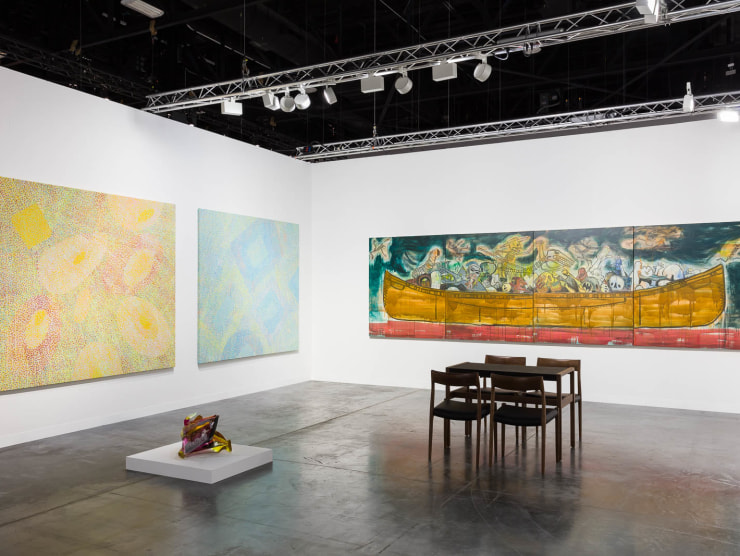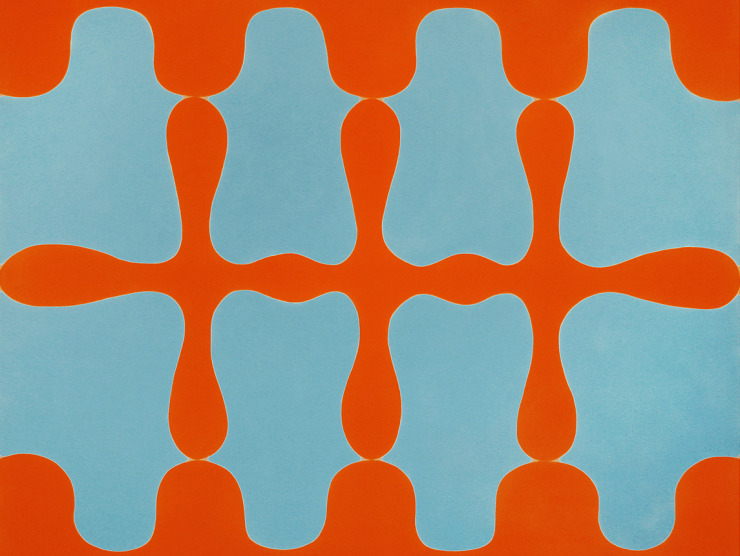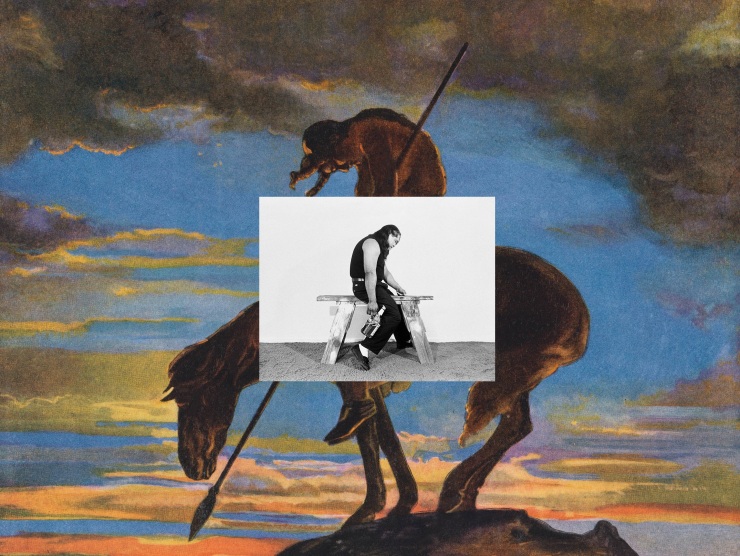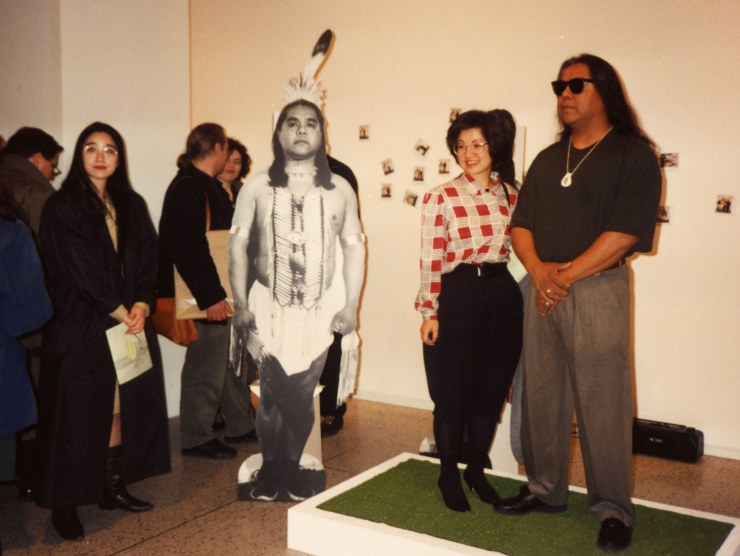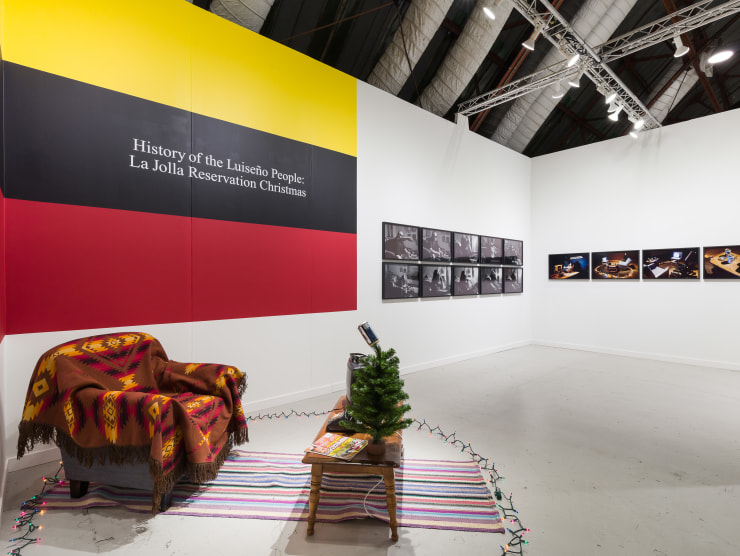
Born on February 9, 1950, James Luna was of Luiseño, Puyukitchum, Ipai, and Mexican heritage and lived on the La Jolla Indian Reservation in Pauma Valley, California, from 1975 until his death on March 4, 2018. Luna taught studio art at the University of California, Davis; University of California San Diego; and University of California Irvine.
In many of his works, Luna used humor as a tool to simultaneously disarm and confront. For example, dressed as a shaman, the artist begins Shameman with a cleansing ritual. After a short period, he highlights the selection of “sacred” objects that will be available for sale after the show. One such item elicits uproarious laughter: a “wet dream catcher,” consisting of the head of an old wooden tennis racquet with feathers, condoms, and a lucky rabbit’s foot affixed to the strings and frame. The artist notes that the piece is “signed and dated,” and part of anot to mention “limited edition.” Suddenly, the authenticity of his ritual, dress, and identity are all called into question, but the grift is Pyrrhic, relying as it does on the fraudulent repackaging of Luna’s cultural heritage.
Luna’s initial performance of Take a Picture with a Real Indian took place at the Whitney Museum of American Art's Downtown at Federal Reserve Plaza branch on April 2, 1991. Luna then restaged the performance on the steps outside Union Station in Washington, D.C on October 11, 2010. Presenting himself as a tourist attraction, the artist invited onlookers with the eponymous line, “Take a picture with a real Indian.” As the crowd gathered, he continued: “Take a picture here, in Washington, D.C,. on this beautiful Monday morning, on this holiday called Columbus Day.” Like many of his works, the performance deconstructed America’s selective romanticization and shameless commodification of Native Americans. “America loves to say ‘her Indians,’” Luna added. “America loves to see us dance for them. America likes our arts and crafts. America likes to name cars and trucks after our tribes.”
Luna described the performance as one of mutual humiliation. As he stood stoically, tourists cracked jokes, thanked him for the souvenir photos, or brought up family stories about possible connections to various tribes. Their shallow excitement, paired with the inauthenticity of the encounter, revealed much about the American culture that surrounded it.
The artist has been the subject of more than 41 solo exhibitions and has participated in over 85 group exhibitions. His works and performances have appeared in the New Museum (1990, New York), Museum of Modern Art (2009, New York), San Francisco Museum of Art, Los Angeles County Museum of Art, the National Gallery of Canada (Ottawa), Museum of Contemporary Native Art (2015, 2018, Santa Fe), Museum of Contemporary Art San Diego (1987, 2019), and Whitney Museum of American Art (1993, 2019, New York). In 2005, he was selected as the first Sponsored Artist of the Smithsonian’s National Museum of the American Indian presented at the 51st Venice Biennale (2005).
Luna was the recipient of numerous grants and awards, including the Bessie Award (1991), an Intercultural Film/Video Grant from the Rockefeller Foundation (1992), a Native American Public Broadcasting Consortium video grant (1995), an Andrea Frank Foundation Grant (2000), an Arts International Grant (2000), a Distinguished Artist Award and Eiteljorg Museum Fellowship for Native American Fine Art (2007), a Painters & Sculptors Grant from the Joan Mitchell Foundation (2010), a National Arts Fellowship from the Native Arts and Cultures Foundation (2015), and a Guggenheim Fellowship (2017). In 2012, James Luna was awarded an Honorary Doctorate of Humanities from the Institute of American Indian Arts, Santa Fe.














